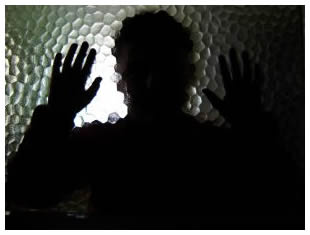 The first time Elise met her mother-in-law she was struck by the fact that the woman seldom made eye contact with her. Instead she looked slightly over her shoulder into the distance, even when she was talking to her. The first time she hugged her mother-in-law, after receiving a Christmas gift from her, the mother-in-law became perfectly rigid and did not return the hug. Looking around at the rest of the family, Elise noticed that they were all holding their breath. Apparently no-one ever hugged Mom. Elise was at a loss to know what she was dealing with.
The first time Elise met her mother-in-law she was struck by the fact that the woman seldom made eye contact with her. Instead she looked slightly over her shoulder into the distance, even when she was talking to her. The first time she hugged her mother-in-law, after receiving a Christmas gift from her, the mother-in-law became perfectly rigid and did not return the hug. Looking around at the rest of the family, Elise noticed that they were all holding their breath. Apparently no-one ever hugged Mom. Elise was at a loss to know what she was dealing with.
Over time, there were other subtle but unusual behaviors: lack of empathy with the plight of others, absence of social niceties, and statements to others that, while factual, would not be spoken by people with a normal social skills. There was also an inability to understand humor, particularly puns which require association skills, and any humorous comments were instead taken literally. Elise’s mother-in-law was not only socially clumsy but often physically clumsy as well, lacking in coordination and poise. Elise’s mother was finally diagnosed with Asperger’s Disorder.
Asperger’s is one of the Pervasive Developmental Disorders and shares much in common with autism. The principal difference is that, unlike many sufferers of autism, there is no intellectual impairment. In fact, many people with Asperger’s are of normal to high intelligence. Many are gifted mathematically. Like autism, there is a marked inability to relate to others socially, but unlike autism, sufferers can be quite verbal. However their conversation typically centers on a series of factual comments, often rattled off quite enthusiastically. However there is a noted absence of any real person-to-person relating. When the string of facts is exhausted, the Asperger sufferer will often lapse into silence and display a noticeable inability to engage in everyday social chit-chat. Recent research suggests there is a significant genetic component to Asperger’s.
The disorder can make for difficult interfamily and interpersonal communication, and generally there is a lack of long-term meaningful friendships, since the person with Asperger’s is unable to correctly interpret facial expressions, body language or even overt language cues from others, thus making communication on an intimate level near impossible.
In articles to come, we will investigate further behavior patterns of the Asperger sufferer and coping techniques for family, friends, and work colleagues.
Contact Beth McHugh for further information or assistance regarding this issue.
Related articles:
Adults with Asperger’s Disorder
Coping with an adult with Asperger’s (1)
Coping with an adult with Asperger’s (2)
Coping with an adult with Asperger’s (3)
Coping with an adult with Asperger’s (4)

